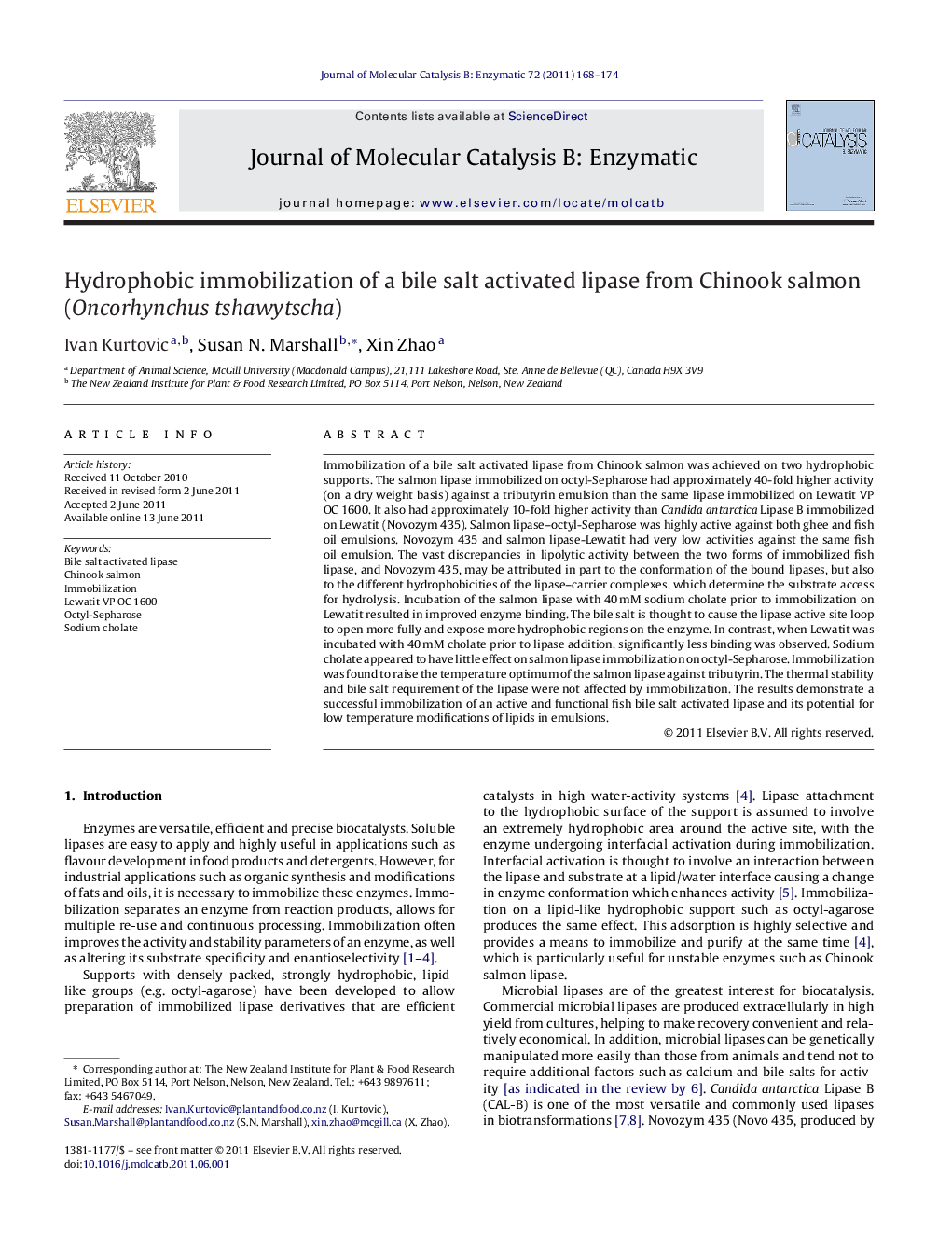| Article ID | Journal | Published Year | Pages | File Type |
|---|---|---|---|---|
| 70179 | Journal of Molecular Catalysis B: Enzymatic | 2011 | 7 Pages |
Immobilization of a bile salt activated lipase from Chinook salmon was achieved on two hydrophobic supports. The salmon lipase immobilized on octyl-Sepharose had approximately 40-fold higher activity (on a dry weight basis) against a tributyrin emulsion than the same lipase immobilized on Lewatit VP OC 1600. It also had approximately 10-fold higher activity than Candida antarctica Lipase B immobilized on Lewatit (Novozym 435). Salmon lipase–octyl-Sepharose was highly active against both ghee and fish oil emulsions. Novozym 435 and salmon lipase-Lewatit had very low activities against the same fish oil emulsion. The vast discrepancies in lipolytic activity between the two forms of immobilized fish lipase, and Novozym 435, may be attributed in part to the conformation of the bound lipases, but also to the different hydrophobicities of the lipase–carrier complexes, which determine the substrate access for hydrolysis. Incubation of the salmon lipase with 40 mM sodium cholate prior to immobilization on Lewatit resulted in improved enzyme binding. The bile salt is thought to cause the lipase active site loop to open more fully and expose more hydrophobic regions on the enzyme. In contrast, when Lewatit was incubated with 40 mM cholate prior to lipase addition, significantly less binding was observed. Sodium cholate appeared to have little effect on salmon lipase immobilization on octyl-Sepharose. Immobilization was found to raise the temperature optimum of the salmon lipase against tributyrin. The thermal stability and bile salt requirement of the lipase were not affected by immobilization. The results demonstrate a successful immobilization of an active and functional fish bile salt activated lipase and its potential for low temperature modifications of lipids in emulsions.
Graphical abstractFigure optionsDownload full-size imageDownload as PowerPoint slideHighlights► Chinook salmon lipase was immobilized on octyl-Sepharose and Lewatit VP OC 1600. ► Salmon lipase–octyl-Sepharose efficiently hydrolyzed emulsified lipid substrates. ► The hydrophobicity of the lipase-carrier complex influenced the activity. ► Immobilization of the salmon lipase was affected by sodium cholate.
